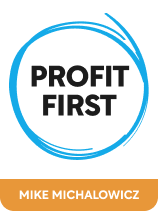

This article is an excerpt from the Shortform book guide to "Profit First" by Mike Michalowicz. Shortform has the world's best summaries and analyses of books you should be reading.
Like this article? Sign up for a free trial here .
Do you want to make your business run more efficiently? What are some things you can do to increase the efficiency of your operations without compromising quality?
In his book Profit First, Mike Michalowicz says that business owners should try to increase efficiency everywhere they can. Michalowicz recommends three mindsets to accomplish this: 1) don’t just think small, 2) solve a unique problem well, and 3) push sales after you adopt an innovation.
Here’s how to improve business efficiency, according to Michalowicz.
Making Your Business More Efficient
Michalowicz explains that, in addition to cutting expenses, you should also improve your business by increasing efficiency everywhere you can. In this article, we’ll cover his advice on how to improve business efficiency by seeking innovation and focusing on your most profitable services and clients—all of which is in service of specializing in what your business does best and getting even better at it.
Search for Innovation
To make your business more efficient, you should always be looking for ways to improve via simplification, organization, and innovation. With the Profit First method, your limit on expenses forces you to find ways to do more with less. In other words, you’ll look for ways to earn more profit while using less time and money. (Shortform note: You might be wondering why working with less will help you be more creative. According to creativity coach Coleen Chandler, constraints like limited money spark creativity because they force us to approach problems in ways we aren’t used to, and being in new situations helps us think of new ideas.)
Mindset #1: Don’t Just Think Small
Most ways you can innovate or improve your business come from questioning your assumptions about how your business has to run. These kinds of assumptions are in every part of a business: how your employees should do their work, how your product should be made, and how you should find new clients. By questioning each of your assumptions, you might find that one isn’t actually the best way to run your business, and that you can innovate on it to save money.
In other words, don’t just think about little ways to save a few dollars here and there—consider how you might change major parts of your business to increase profitability. Larger parts of your business rely on many more assumptions and will increase efficiency a lot more if innovated upon.
- A classic example of this is the story of the employee who suggested a box of matches only have a striker strip on one side instead of both, which over time ended up saving enormous amounts of money. The company assumed their product should be made a certain way, but the employee challenged that assumption and revealed that their product could be improved.
| How to Come Up With Big Innovations Coming up with large-scale innovation can be difficult, as it requires thinking creatively on-demand. In his book The Magic of Thinking Big, David J. Schwartz offers several concrete guidelines for finding large-scale innovations in your business. 1. Never assume the impossible: Schwartz explains that when you declare something is impossible, you’re focusing on the negative instead of the positive, which prevents you from being creative. When you believe you can do something, though, then he says that your brain will get to work thinking about different ways you could potentially accomplish that task. 2. Embrace different ideas: Don’t reject ideas simply because nobody has tried them before, or because they are “simply not the way things are done.” Instead, think to yourself about why that idea might work or might not work. Again, doing so will allow your mind to think about new ideas, rather than just getting stuck on negatives. 3. Ask questions and listen to others: Other people might have ideas that you wouldn’t otherwise think of. And even if those ideas ultimately don’t work, they will still take your brain in new directions, helping you be creative. 4. Look for new sources of stimulation: By varying up your routines and experiencing new things, your mind will become better at processing and coming up with new ideas. These new sources of stimulation should come outside of your business’s field, since you’ll find more ideas you haven’t previously experienced there. |
Mindset #2: Solve a Unique Problem Well
Michalowicz says you should innovate your business to try and make it the best at solving a specific problem. This way, you’ll become the business that every client with that problem will want to buy from. He recommends you find the unique problem you can solve for your clients, and then focus your efforts on innovating that specific aspect of your business.
- Example: The Snuggie solves a unique problem well—despite earning plenty of mockery, the company has also made millions by creating a product designed to solve the very specific problem of unsecured blankets slipping off.
(Shortform note: Michalowicz suggests that once you find the unique problem your business solves, you should continue to build your business around solving that problem. However, business consultants Ken Blanchard and Sheldon Bowles argue in their business parable Raving Fans that the demands of your customers will change over time. Contrary to Michalowicz’s advice to build on one solution, they suggest you should be ready to alter your product or service to keep your customers satisfied.)
Focus on Profitable Services
Michalowicz explains that the specific problem your business solves—and what your business specializes in—should align with your most profitable service or services. Specialization reduces the time and money spent on a given sale by narrowing your focus on fewer, more consistent tasks. Additionally, focusing on your most profitable services will help you keep your margins high.
Chances are, you’ll find that a vast majority of your profit comes from a small minority of your services. Find out which of your services generate the most profit and focus on innovating and improving your ability to offer them. If one of your services breaks even or is unprofitable, spend less time and money on it or cut it altogether.
- For example: A general practice lawyer might have a lot of clients, but it takes a lot of time, knowledge, and money to provide the wide variety of services they need. However, a lawyer who specializes in corporate tax law will provide fewer, more profitable services for clients with a smaller range of needs, and will also be more indispensable to their clients because of the skill they have in their specific area.
(Shortform note: If you’re having trouble understanding how you might find your most profitable services, consider reframing it as the process of cutting services that are only useful in specific, exceptional circumstances. Often, companies will spend disproportionate amounts of money on offering complex and niche services just in case a client asks for them. These services are inefficient because they require extra specialization for something that doesn’t bring in a significant amount of revenue. To find your most profitable services, look for those that seem to be the most useful to and used by your clients.)
Focus on Profitable Clients
In addition to focusing on profitable services, Michalowicz emphasizes that you should pick and choose clients who are the easiest to work with and bring you the most profits. He cites a study that says that the top 25 percent of your clients will bring in 150 percent of your profit: The middle 50 percent merely break even, while the bottom 25 percent of your clients will actually cost you 50 percent of your profit. This is because the study also found an average business will be spending the same amount of resources on all of these groups, even if they generated much less revenue.
Because of this, you should specialize your business to focus on your most profitable clients. This will attract more clients like them, and you’ll naturally be inclined to better serve clients you get along with who are profitable for your business. If you have a client who isn’t working well with you and isn’t profitable, you should drop that client. It might go against your instincts to give up on a sale, but a bad client will slow you down, increase your expenses, and cause you stress, so dropping them is a smart financial decision. Your goal with the Profit First method isn’t to maximize sales (as doing so means taking on more expenses), but instead to maximize the profits from your sales.
| How to Focus on Profitable Clients While Michalowicz recommends you focus more on profitable clients, you might be wondering what practical steps you can take to do so. The management consultancy Strategex, who conducted the client profitability study Michalowicz cites, recommends that you focus on profitable clients by taking practical steps in these two areas of your business: Delivery: Strategex recommends that your business delivers services and products to profitable clients before anyone else. When you do this, your business will better satisfy its profitable clients and be more likely to keep them. This means it will take longer to deliver to less profitable clients since they’ll be a lower priority, but that’s acceptable—even if you lose them, it won’t be too harmful to your business. For example: A paint factory that receives a massive order for their typical products from a consistent client should focus on completing that order first before worrying about smaller or more specialized orders from other clients. Sales: Strategex also recommends that you spend the majority of your sales time making calls to potential new clients that are profitable, and cut the time you spend calling less profitable clients to keep the overall hours spent on sales the same. This will make you more likely to get sales that will be profitable and benefit your business, while also spending less time trying to sell to unprofitable clients you don’t want anyway. |
Mindset #3: Innovate, Then Sell
When you find an innovation or way to make your company more profitable, you should push sales hard right after. Implementing innovation to become more profitable will increase your margins, but only for a limited time. Eventually, your competitors will discover and implement your innovations, meaning you’ll have to lower your margins to stay competitive. To make the most profit, then, you should push sales while your margins are higher and push for innovation when they are lower.
| Adding Extra CustomersYou might be wondering how you can quickly increase your sales during these high-margin periods following new innovation. Business education professor Josh Kaufman offers several guidelines you can follow to make sure your marketing brings you additional customers in The Personal MBA. 1. Market to people already interested: Kaufman argues that advertising to people currently uninterested in your product isn’t effective, so your business shouldn’t bother trying to bring in that demographic. Instead, he says, target people who have already shown interest in your offer, or in an offer similar to it. Your marketing will have a higher chance of turning these people into your customers, because their existing interest means they’ll be more likely to pay attention to what you’re saying. 2. Keep it short: When marketing to these interested potential customers, Kaufman explains that your messaging to them should be short, so as not to lose anyone’s attention. 3. Use endorsements: Look for someone your potential customers like or trust, and have them endorse you. By doing so, your potential customers will associate (consciously or unconsciously) those positive feelings with your product or service being endorsed, which will make them more likely to become actual customers. 4. Keep it positive: Make sure your messaging emphasizes the benefits of your product or service. By doing so, your potential customers will start to feel like they are missing out if they don’t buy from you, which will convince many to become actual customers. |

———End of Preview———
Like what you just read? Read the rest of the world's best book summary and analysis of Mike Michalowicz's "Profit First" at Shortform .
Here's what you'll find in our full Profit First summary :
- Why traditional business accounting methods don't work
- How to use the Profit First method to increase your business’s profitability and stability
- How to assess your business's current financial health






